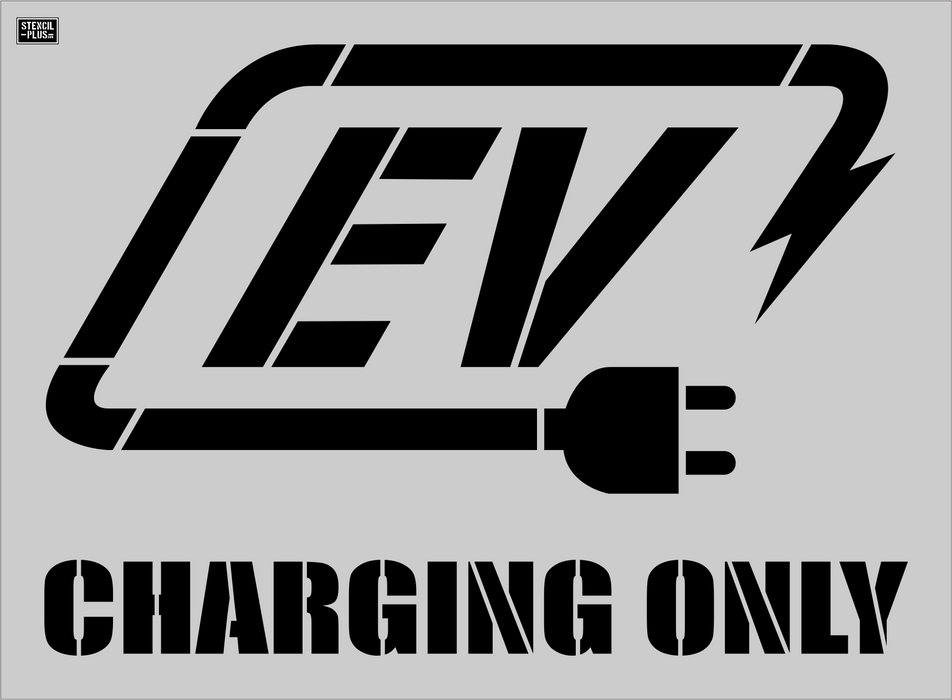
42" EV Charging Only Pavement Marking Stencil
Stencil Plus- 42" EV Charging Only
Item SKU#:3570
⚖️ Electric Vehicle (EV) Parking Regulations
EV parking regulations vary by location, country, and municipality, but they generally aim to ensure that EV drivers have fair access to charging infrastructure and that non-EVs do not occupy these spaces. Here’s a breakdown of the most common regulations and standards:
🚦 1. EV-Only Parking Rules
-
Exclusive Use: EV parking spaces are typically reserved exclusively for electric vehicles.
-
Signage and Markings:
-
EV-only spaces usually have green paint, EV symbols, or signage indicating they are for electric vehicles.
-
Phrases like "EV Charging Only" or "Electric Vehicle Parking Only" are common.
-
⏱️ 2. Time Limits & Charging Etiquette
-
Time-Restricted Parking:
-
Some locations enforce time limits (e.g., 2–4 hours) to prevent "hogging" EV spaces.
-
This encourages turnover and ensures more EVs can access charging.
-
Pavement marking stencils are reusable templates used to apply standardized symbols, letters, numbers, and other markings on roads, parking lots, airport runways, warehouses, and other paved surfaces. These stencils help ensure consistency, clarity, and compliance with regulations.
Types of Pavements Marking Stencils
- Letters & Numbers – Used for lane designations, speed limits, and other text-based instructions.
- Arrows – Indicate directions, lane usage, and turning lanes.
- Handicap Symbols – Mark ADA-compliant parking spaces.
- Custom Logos & Messages – Used for branding, reserved parking, or business-specific markings.
- Traffic & Safety Symbols – Includes stop signs, crosswalks, bike lanes, and pedestrian symbols.
Materials Used
- Plastic (polyethylene or polypropylene) – Durable and reusable.
Application Process
- Surface Preparation – Cleaning the pavement for proper adhesion.
- Stencil Placement – Positioning the stencil in the desired location.
- Paint Application – Using spray paint, rollers, or thermoplastic paint.
- Stencil Removal & Cleanup – Carefully lifting the stencil to prevent smudging.
Low-Density Polyethylene (LDPE) Explained
Low-Density Polyethylene (LDPE) is a thermoplastic polymer made from the monomer ethylene. It is known for its flexibility, toughness, and chemical resistance, making it widely used in various applications.
Key Properties of LDPE
- Low Density – Less compact molecular structure, making it softer and more flexible than high-density polyethylene (HDPE).
- High Ductility & Toughness – Resistant to impact and bending without breaking.
- Moisture & Chemical Resistance – Does not absorb water and resists many acids, alcohols, and bases.
- Transparency – Semi-clear, making it useful for packaging and film applications.
Material Grades and Thickness
PRO-X .125 LDPE
PRO-Y .100 LDPE
PRO-S .060 LDPE

